Golden alexander is a hardy native perennial that brightens spring gardens with clusters of vibrant yellow flowers, drawing in beneficial pollinators. It naturally thrives in moist prairies, woodland edges with filtered sunlight, and damp thickets, making it a versatile choice for various garden settings.
This low-growing plant forms a neat, mounded shape and spreads gradually, creating a colorful and textured groundcover that requires minimal upkeep—an excellent addition to any home landscape.
| Common name | Common Golden Alexander, Golden Alexanders, Meadow Parsnip, Wild Parsley |
| Botanical name | Zizia aurea |
| Family | Apiaceae |
| Species | aurea |
| Origin | Eastern North America |
| Life cycle | Perennial |
| Plant type | Native Plant |
| Hardiness zone | 3, 4, 5, 6, 7, 8 |
| Sunlight | Full Sun |
| Maintenance | Low |
| Soil condition | Clay |
| Drainage | Well-Drained |
| Growth rate | Fast |
| Spacing | 12 in. – 3 ft. |
| Harvest time | Summer |
| Flowering period | Summer |
| Height | 1 ft. – 2 ft. |
| Width | 1 ft. – 2 ft. |
| Flower color | Gold, Yellow |
| Leaf color | Green |
| Fruit color | Green |
| Fruit type | Capsule |
| Flower benefit | Good Cut |
| Garden style | Butterfly Garden |
| Uses | Meadow |
I. Appearance and Characteristics
Zizia aurea (golden alexanders, golden zizia) is a flowering herbaceous perennial plant of the carrot family Apiaceae. It is native to eastern Canada and the United States, from the eastern Great Plains to the Atlantic Coast. The genus is named for Johann Baptist Ziz, a German botanist. The common name is based on the similarity to alexanders (Smyrnium olusatrum), another member of the carrot family from coastal areas in Europe and Northern Africa.
Zizia aurea grows to 40 to 75 centimetres (16 to 30 in) tall but can sometimes grow taller. The leaves are 8 cm (3+1⁄4 in) long and 5 cm (2 in) wide. They are attached to the stems alternately. Each leaf is compound and odd-pinnate, with leaflets that are normally lanceolate or ovate with serrated edges. The root system consists of a dense cluster of coarse fibrous roots.

It blooms from May to June. Its flowers are yellow and grow in a flat-topped umbel at the top of the plant. Each flower is only 3 mm (0.12 in) long and has five sepals, five petals, and five stamens. Each flower produces a single 3 to 4 mm (0.12 to 0.16 in) long, oblong fruit (schizocarp) containing two seeds. In the fall both the leaves and the fruit turn purple.
II. How to Grow and Care
Sunlight
A native prairie plant, golden alexander thrives in full sun—more than 8 hours of direct sunlight a day. However, it will also grow in areas that are partially shaded if it receives long periods of direct sunlight.
Temperature and Humidity
Tolerant of a wide range of temperatures, golden alexander grows well in USDA Hardiness Zones 3-8. It regularly returns in spring after long periods of subzero temperatures and grows through the heat of summer. Humidity doesn’t affect golden alexander.
Watering
Although golden Alexander prefers consistent moisture (often growing naturally in boggy sites), it can also handle dry conditions surprisingly well. For best results, making sure your plants are kept consistently moist during the growing season is a good idea.
Soil
Golden Alexander likes a somewhat rich neutral soil with good drainage but can still do well in sandy or clay soils, or in areas with a lot of limestone where the soil is slightly, but not too, acidic.

Fertilizing
Like other native prairie plants, golden alexander doesn’t require fertilizer. It grows best in soil that is naturally fertile. Improve garden soil by mixing a 2-inch-thick layer of compost into the soil annually.
Planting Instructions
Golden alexander can be started from seed or transplants. To start golden alexander from seed, scatter the seed on top of weed-free soil in late fall. Golden alexander seed, like the seed of many native plants, needs an extended cold period (known as stratification) to germinate. Winter will serve as that cold period and seed will germinate in early spring.
Plant golden alexander transplants in early spring as soon as the soil can be worked. Dig a planting hole slightly larger than the plant’s root ball. Plant the golden alexander by backfilling with native soil; no soil amendments or fertilizer is needed. Water the transplants well after planting and water regularly for about a month until established.
Propagation
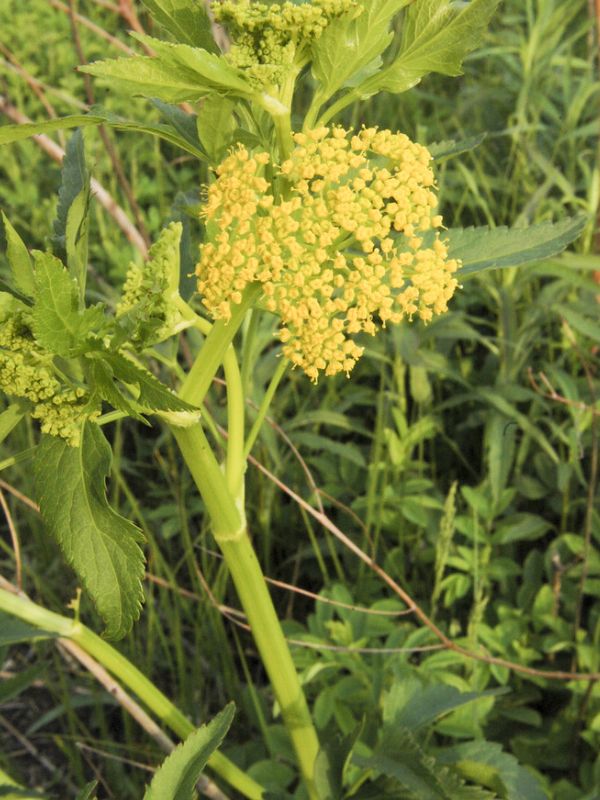
- From Seed
In most cases, this plant is not intentionally propagated, as it occurs naturally as a native perennial and naturalizes readily in suitable conditions. Growing golden Alexander from seed is rather difficult as these plants are not widely available commercially. You may be lucky in finding seeds from a specialist native plant nursery.
You could gather the seeds in the wild to plant, but care should be taken not to disturb or deplete the growing area. Clip off seed heads in the late summer and early fall when you see them.
The seeds need a period of two to three months of cold stratification to be viable for spring planting so winter sowing is best. It’s also possible to plant the unstratified seeds in the fall, but there’s some risk they won’t germinate as effectively. Typically the plant does not bloom in its first season from seed but will begin to flower in its second season.
- Division
Golden alexander can also be multiplied by division in early spring. Using a sharp spade, lift the plant’s roots out of the ground and divide the entire plant into several sections with at least a few stems and accompanying roots. Replant the divisions and water well.
Potting and Repotting
Golden Alexander makes an attractive addition to a container garden. The plant’s medium texture can be balanced with finer and coarser textured plants surrounding it in a pot. Plant in any type of container with drainage holes and filled with fresh potting soil.
Overwintering
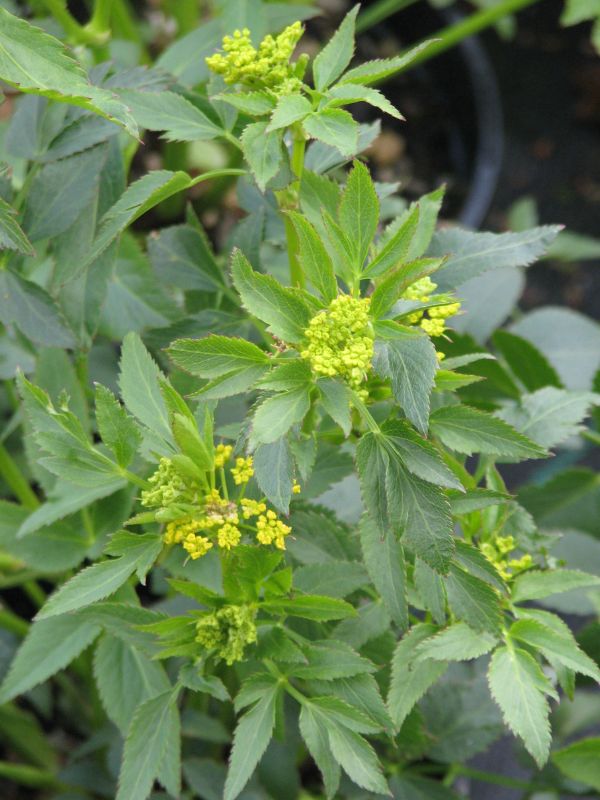
Simply cut back golden Alexander to just above its crown in the fall before the winter. This can be done if planted in a pot or ground. Golden Alexander will revive itself in the springtime.
Pests and Diseases
There are no notable pests of golden alexander. Golden alexander does have the tendency to be short-lived but its ability to reseed and spread means that it doesn’t disappear from the garden.
If reseeding becomes a problem, simply cut off flower heads shortly after they fade to prevent the plant from creating seeds. If unwanted seedlings do pop up, they are easy to remove when young. Golden alexander does not reseed aggressively.
III. Uses and Benefits

When you grow golden alexanders in your garden, you can be sure that bees and butterflies will flock to this plant in the springtime. This plant’s characteristic golden flowers also provide plenty of ornamentation in the spring. It grows quickly and spreads well, making it a great choice as a ground cover or a border plant in informal or pollinator gardens.
Find Where to Buy the Best Golden Alexander (Zizia aurea)








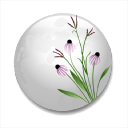



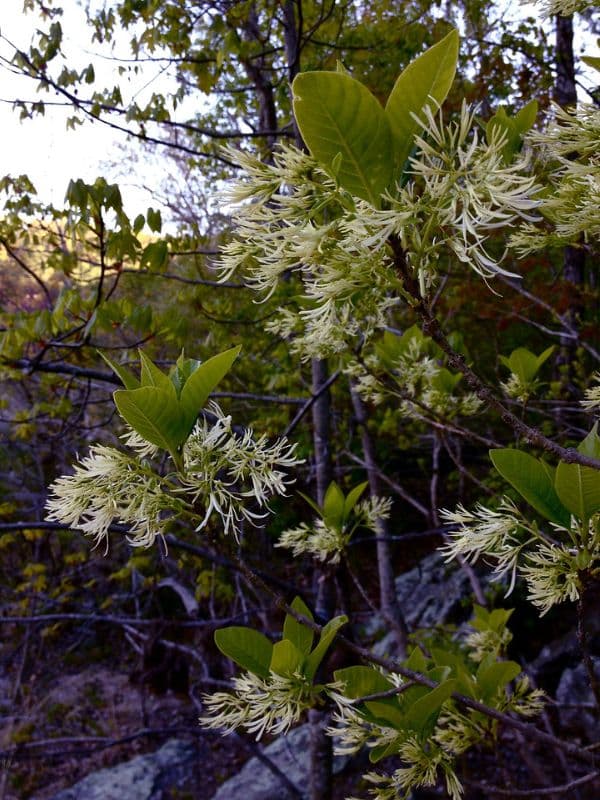
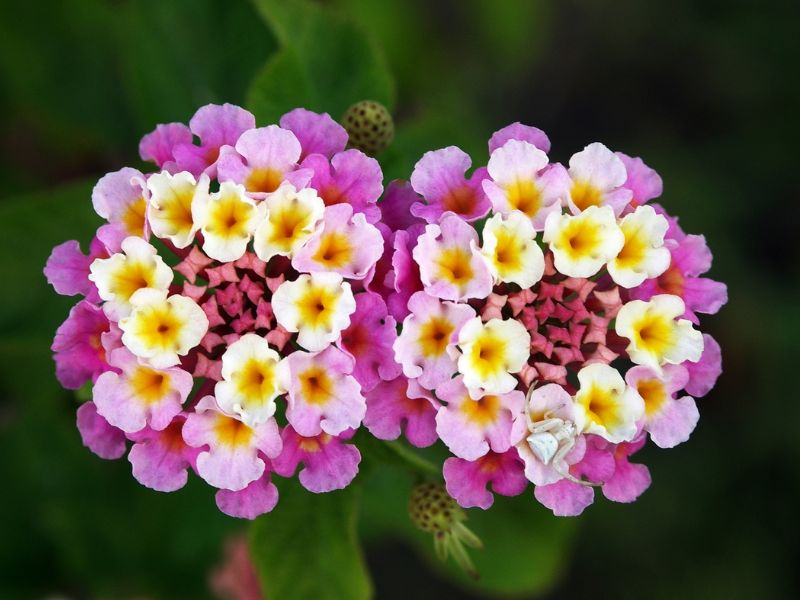
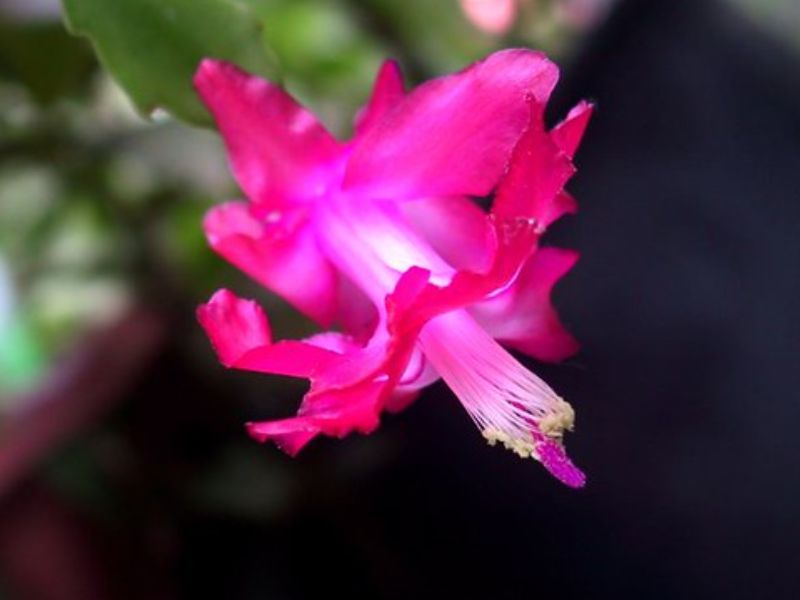

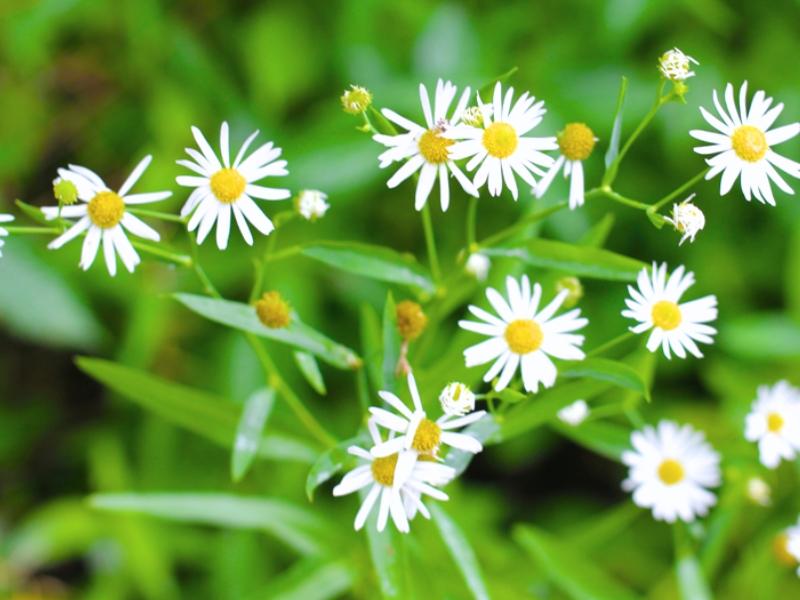
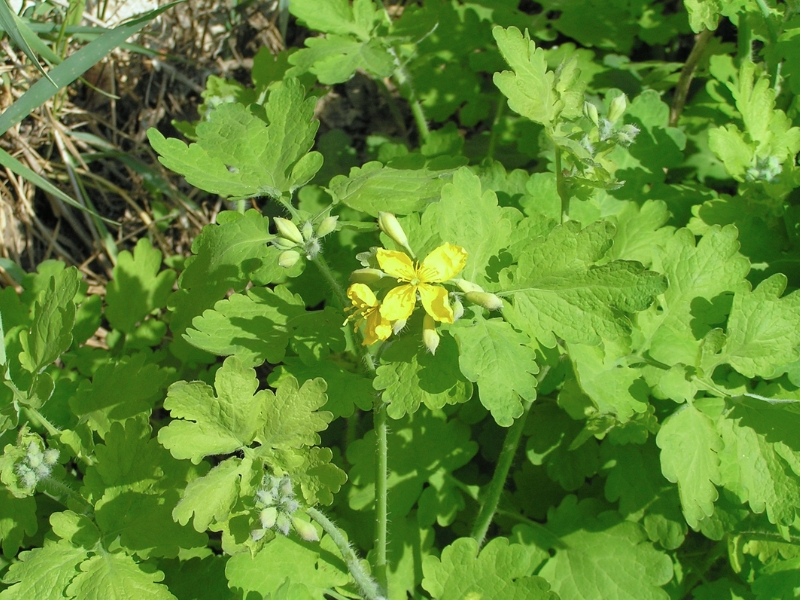
Leave a Reply